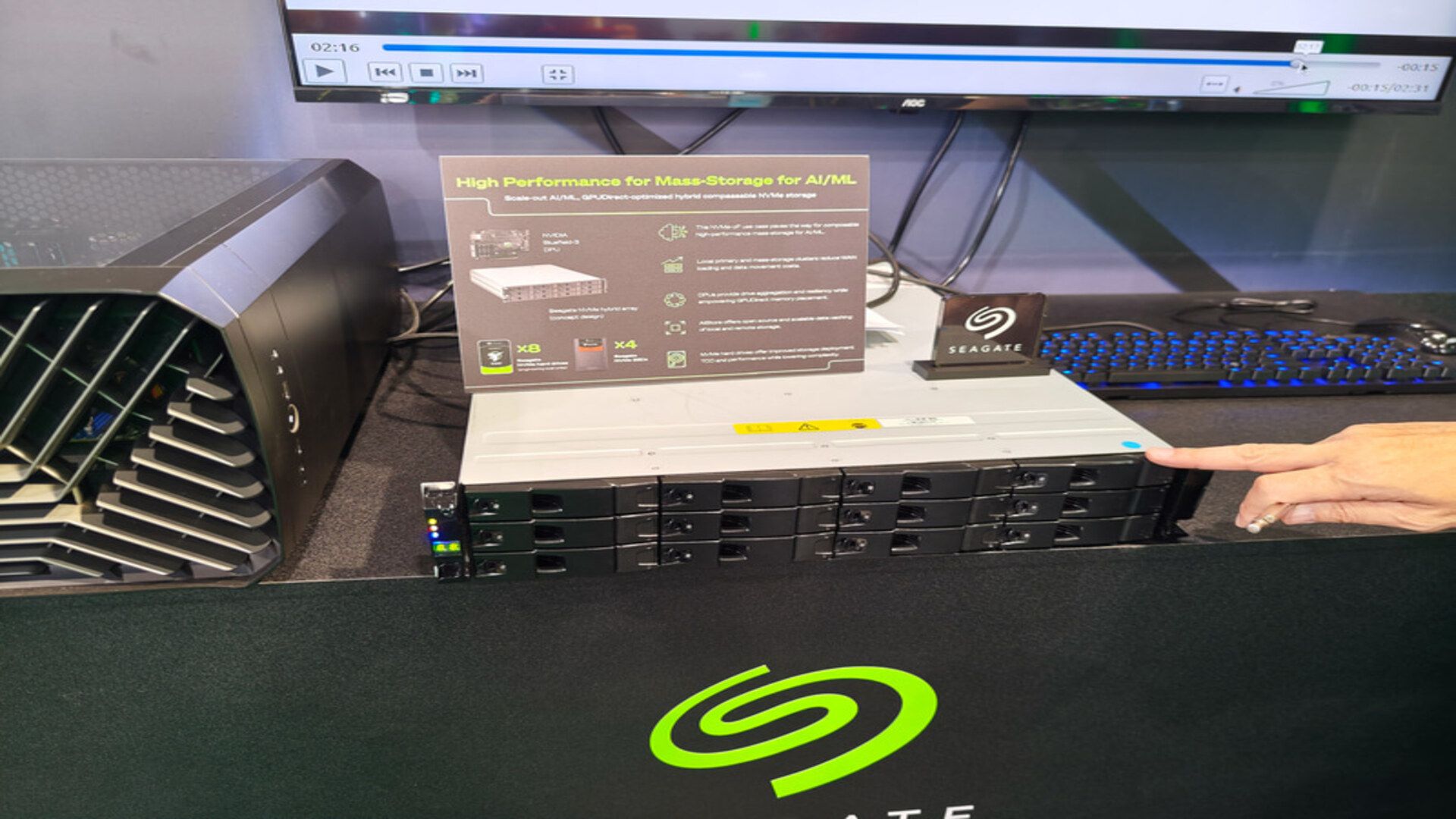- Seagate NVME HDDS can unite storage protocols, but do not wait for speed records
- Business systems can love NVME HDD, but players and creators will not benefit soon
- NVME brings storage consistency, but sas still remains firm in terms of raw performance
Seagate technology demonstrated a hard drive prototype in Computex 2025 that uses NVME, a storage protocol that is typically found in the SSDs.
According PCWatchThe demonstration presented a combination of SSDS and HDD NVME using NVME-of (NVME on fabrics) to communicate on Ethernet.
While the hybrid interface showed potential for data centers, it is not clear if this change will be feasible for personal computers.
NVME integration marks a change in storage interfaces, not performance
Colin Pressley, Chief of Success of the Seagate client, said: “We have already integrated PCIE natively in our HDD drivers,” indicating an important architectural change.
The Prototype unit admits NVME and SAS connections, offering flexibility during what could be a long transition.
However, Pressley quickly managed expectations: “There are almost no benefits in terms of performance. The last SAS provides sufficient performance, and just because it becomes NVME does not mean that there is an important improvement.”
For consumers looking for the best HDD, or even the fastest external HDD, the NVME support offers little immediate benefit.
The true promise lies in speed, but in unification. With the SSDs that are already executed in NVME, bring HDDs under the same protocol simplifies the requirements of the controller and software architecture.
It is important to highlight that NVME compatible HDD is not based on a patented standard. Instead, it follows a formal version of the NVME specification, which now includes commands adapted to mechanical units, such as Spin-UP protocols.
This adherence to open standards increases the probability of a broader industry adoption, especially in business environments where consistency is crucial.
However, it is unlikely that NVME HDDs are available to the general public in the short term. According to Pressley and Seagate, hard drives can take five to ten years to make the transition completely from SATA/SAS to NVME.
This timeline reflects the previous transitions, such as the change from IDE to SATA, where the new standards gradually replaced the inherited interfaces.
While this progression seems inevitable for data centers, desktop computers and laptops of consumers are a different story.
Most consumption systems today still depend on SATA for bulk storage, often combining the largest available HDD with a faster SSD for starting and application performance.
Until the motherboard chips eliminate the SATA support completely, a change is not expected for at least another decade, it is unlikely that NVME HDDs become the main current on the PC at home.









